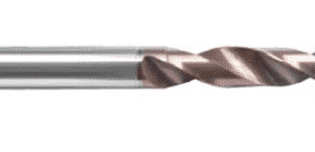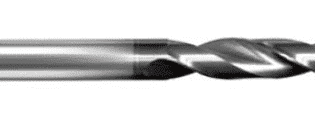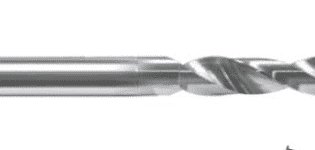Carbide drill bits are hole-drilling tools made from tungsten carbide material. They provide the best combination of penetration rate and precision. It can be used in drilling holes out of all kinds of metal materials like steel, aluminum, and bronze along with other non-metal materials like wood, concrete, masonry, tile, and more.
We manufacture and stock carbide drills for different applications. Our standard ones are 3D and 5D carbide drills for general purposes with bronze coating. The drill bits' substrate material, geometry, and coating can determine their drilling performance in certain materials. And we can manufacture as per your requirements.
What is CNC Drilling?
Drilling is a basic method of hole machining. Drilling is often performed on a drilling machine and a lathe, and it can also be performed on a boring machine or a milling machine. Commonly used drilling machines include bench drilling machines, vertical drilling machines, and radial drilling machines.
The drilling motion constitutes: The rotary motion of the drill bit is the main cutting motion, and the machining accuracy is low.
The process of drilling a hole in a solid material with a bit is called drilling. Drilling is one of the basic methods of hole machining. Drilling is usually performed on a drilling machine or a lathe or on a boring machine or a milling machine.
Drilling machines are the main machine tool for hole machining. Drilling is mainly performed on a drill press using a drill (twist drill). When drilling on a lathe, the workpiece rotates and the tool makes a feed motion. While processing on the drilling machine, the workpiece does not move, the tool performs the main rotation motion, and moves along the axial direction to perform the feed movement.
Drilling machines are therefore suitable for the machining of holes in workpieces that do not have a symmetrical axis of rotation, especially in porous machining, such as machining of holes in parts such as cabinets and racks. In addition to borehole drilling machine can also complete the hole reaming, reaming, boring plane, tapping and other work.
Diffrence between drilling and milling
Drilling and milling are two different processes for machining a workpiece. A drill uses up-and-down motions to cut the material while milling uses sideways motions. The main difference between milling and drilling is the speed. Drilling requires a low spindle speed, while milling requires a high spindle speed. You can see the full page in our blog here.
Solid or Coolant Carbide Drill Bits?
The internal coolant carbide drill is always preferred to avoid chip jamming when drilling deeper holes (4-5 × DC), especially in long chipping materials.
Meetyou has designed a cooling method by applying coolant through the internal hole of the drill bit. This method cools the drill bit more efficiently. The coolant flows right out of the cutting tip of the drill. This cools the hottest part of the drill bit and removes chips by flushing them out of the hole.
Our internal coolant drill bits are the best choice for high-speed operations. The concentrated cooling and rapid chip removal increase the life of the drill and improve production quality.
Compared to HSS Drills
Carbide drill bits are for industrial use for a variety of materials such as aluminum, steel, nonferrous heavy metal, and stainless steel. Carbide drills maintain a sharp cutting edge with better wear resistance than high speed steel drills or cobalt drills and are run at higher speed rates as they absorb heat more efficiently.
As shown in the chart, carbide drills have better hardness, higher temperature endurance along with longer cutting time.
We supply both solid and coolant through drills in a wide range of sizes. Our coolant drills are standard with AlTiN coating to perform a higher cost per drilled hole.


